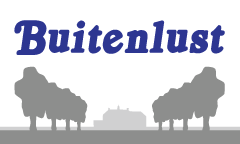Six years of O scale
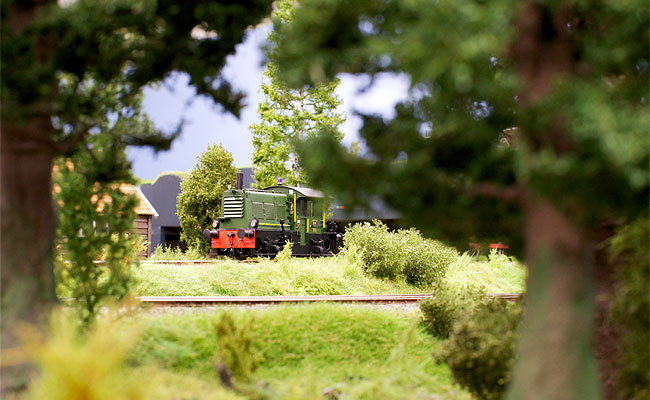
April 2013. It must have been early spring of 2007 when I sold my H0 stuff and switched to 0, or O scale as they call it overseas. I have never regretted the decision (that sounds a bit more radical than it is as I still have Project Waldberg). O scale comes with an undeniable extra factor: size. You are in the middle of it. The photo of the shunter expresses that feeling well.
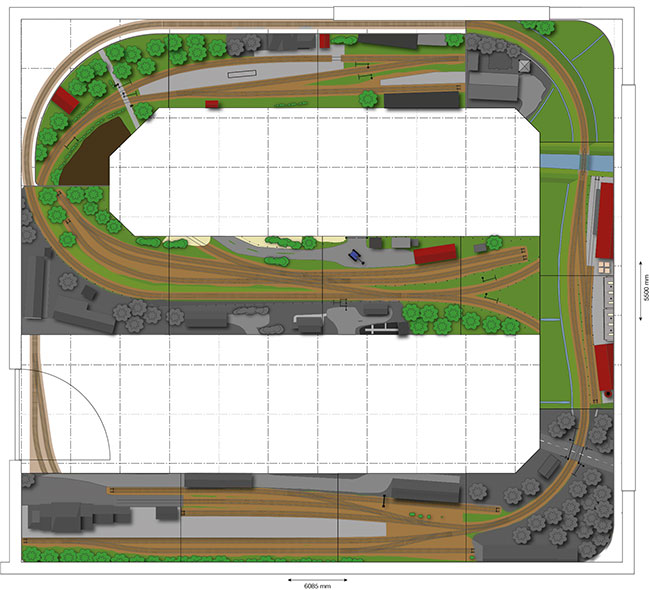
So, how far has Buitenlust come? The bigger part is more or less finished. Of course, there are still dozens of little details to added left and right, but the big picture is there. The black and white sections still need to be done. Especially the bigger buildings take a lot of time to complete; the models are complex and require a lot of research. The layout still needs signals and a decent photographic backdrop. It will probably take another two years to fill the gaps.

The lavatory building of Soest is completed. The main structure was laser cut from 3 mm MDF. The roofing tiles are typical Dutch and were made with 3D printing techniques. The advertising on the front was printed with a special photo printer. The frames were again laser cut from 1 mm plywood.
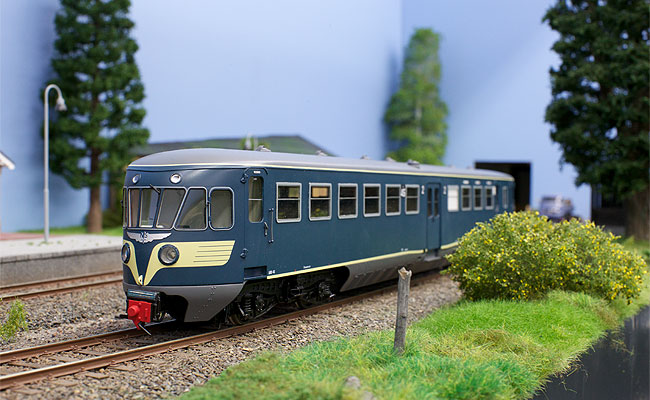
New rolling stock has arrived: a classic Dutch railcar from Philotrain. This is one of the 30 models that were produced. The unique model has been made from brass and is extremely detailed. Because the railcar is quite long, I will need to adjust the clearance in a couple of curves. But first, the model will be fitted with a sound decoder with the recorded original sound.

This typical guard’s house will occupy a spot along the track. The model was drawn based on a H0 model by Artitec, which in turn is based on a real guard’s house between Utrecht and Arnhem. The O scale version will be much more detailed than its little brother, i.e. the windows are constructed from four layers of 1 mm plywood.

These working class houses were just as the guard’s house laser cut from MDF and plywood. The original houses can be found in the Kloosterstraat in the old town of Muiden, numbers 7 to 13. They date from the 19th century. I lived at number 13 for years, which is the house on the right. The small houses are well suited to be modelled in a larger scale.

More laser fun: stairs for the working class houses and for the guard’s house. Plus a series of garden sheds. In O scale you need to build almost everything yourself. It is a lot of work, but the result is always unique.
Building some buildings
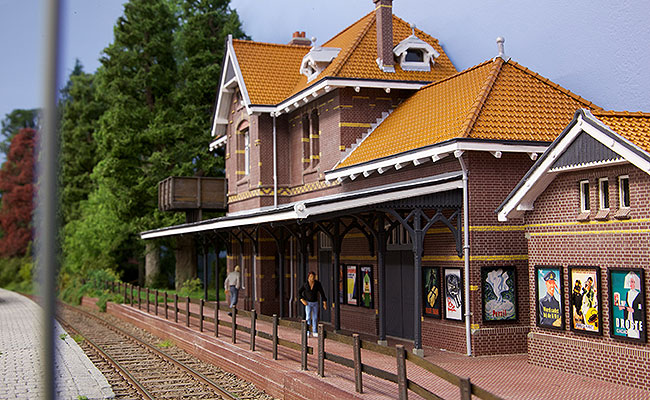
July 2013. The Station of Soest is done. Putting together the building took well over a year. It is the first building I made using laser cutting and that meant sorting out a lot of ‘firsts’. All buildings I designed after this one were easier - and a lot faster - to build. I Learning on the job, so to say. Not all parts were made with laser cutting. The roof tiles and platform roof supports were 3D printed (a big thank you to Fred Hornung for the 3D modelling). The same technique was applied to the poles of the fence. You could say there quite a few advertising posters on the building, but this was really the case in the 1960’s. The posters were made with a professional Canon photo printer.
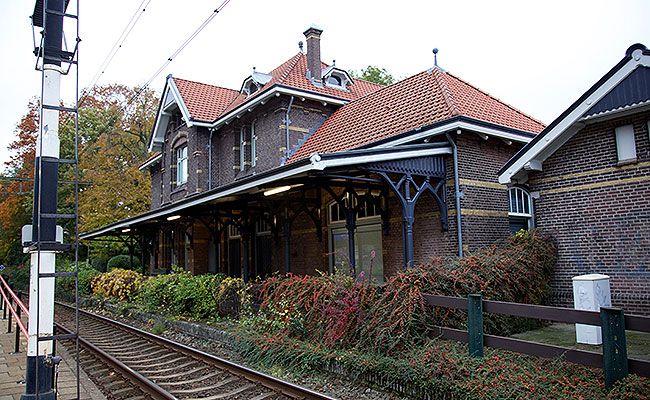
The real building shot from the same angle. Today, the fence has been overgrown. The big chimney - just visible behind the roof - has disappeared and the small chimney has been closed off. Extra drain pipes were added to the main roof. The building is now a private house and office. The advertising has gone. If you have to buy a ticket, you can get one from the ticket machine on the platform.

The station master used to live on the first floor. For years, there was an improvised balcony on the roof of the platform. The balcony is gone now, but the door is still there. Details like the dormers and the ornaments on the roof make the station a unique building.

The first floor has a full interior. The ground floor has half-interior made from photos, as the platform roof makes it almost impossible to look inside. All rooms are lit. Under the platform roof are white LEDs to mimic the tubes lights that are there in reality.

The old first platform has been fenced off. The poles are somewhat undefined pieces of steel, probably old steel sleepers. The miniature versions were 3D modelled and printed. The fence at the end of the platform used to have texts ‘to the trains’ and ‘exit’. I recreated the old type from photos, printed the texts on decal paper and put them on the white painted planks. The diorama of Soest is about done now. Only the semaphores and their operating wires still need to be added.

Meanwhile, construction on the sand depot modules continues. This building is a stone shed used by the foresters. Like the station, it has been created from laser cut MDF. Doors and windows are made from 1 mm plywood. Smaller details are laser cut from 0.3 mm cardboard.

This guard’s house can be found along the railway from Utrecht to Arnhem. Years ago, Artitec made a nice model of it in H0 scale. Based on their model and pictures of the real building I have recreated this typical house in 1:43.5. The walls were laser cut from 3 mm MDF, the windows and the shed were cut from 1 mm plywood. One wall of the double house has no windows at all. Apparently, the board of the railways didn’t want their staff to look at anything else but trains.

These pictures show how relatively easy it is to create a well-detailed building in this big scale. Compared to the H0 model, this building has a.o. sliding windows (built in layers). The wood structure of the plywood adds a nice characteristic look to the shed.

Both buildings will be installed on the modules of the sanding pit yard. First I have created the basis of the landscape with grass fibres. The base coat of grass will be roughed up by adding tons of small green bits.
Take a tour of Buitenlust
August 2013. Pictures are great, but video is even better. In this film you take a tour from Baarn NCS via Vrolic and the Sanding Siding to Soest. And back again. The large scale renders a realistic image on camera. The film is about 4:30 and was shot with a GoPro Hero 3 and a Canon XA20.
2013
